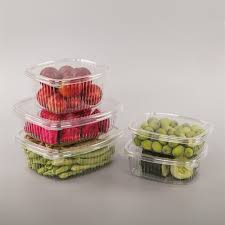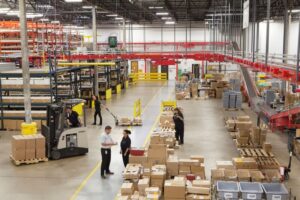Choosing Plastik Packaging Makanan: A Guide to Awareness

In the practice of medicine, we learn early that prevention is a form of cure administered in advance. The same principle applies to the objects we invite into our homes, into our kitchens, and ultimately, into our bodies. Plastik packaging makanan represents one such invitation, extended millions of times daily across Malaysian households, from modest flats in Wangsa Maju to colonial bungalows in Georgetown. Yet how many of us pause to consider what we are truly inviting in?
The Molecular Intimacy of Modern Life
There exists an intimacy between plastic and food that rivals any biological relationship. At the molecular level, these synthetic polymers sit mere nanometres from the nutrients that will nourish our children’s growing brains, our parents’ aging hearts. In my years studying how substances alter human cells, I have learned that proximity matters. Heat accelerates molecular movement. Time allows migration. Chemistry, like history, is patient but inevitable.
The Ministry of Health Malaysia has documented what any oncologist might predict: chemical compounds from Plastik packaging makanan can leach into food, particularly when exposed to heat or stored for prolonged periods. This is not abstract science. This is the rice we serve our families, the curry we pack for tomorrow’s lunch. The question is not whether migration occurs, but how much, and what it means for the bodies we inhabit.
Decoding the Hieroglyphics of Safety
Turn over any plastic container and you will find a number enclosed in a triangular recycling symbol. These numerals, one through seven, function much like genetic markers in biology. They tell us something essential about identity, about risk, about what might be inherited or transmitted.
PET, marked as number 1
Appears on water bottles and soft drink containers. Like certain cells designed for a single mitotic division, PET is meant for single use. Heat destabilises it. Imagine that bottle left in a car under the Malaysian afternoon sun, its molecular structure quietly unraveling, releasing what it was meant to contain.
HDPE, number 2
Proves more resilient. Found in milk bottles and yogurt containers, it withstands repeated use. If plastics had a prognosis, HDPE would carry a favourable one for long-term food storage.
PVC, number 3
Requires our vigilance. This polymer harbours concerning compounds: BPA, phthalates, lead, cadmium. In medical terms, we would call these teratogens and carcinogens. Research suggests PVC represents a high-risk profile, capable of leaching multiple toxic substances. We should avoid it, much as we avoid known pathogens.
LDPE, number 4
Occupies middle ground. Relatively safe for food storage, though ultraviolet exposure over time may compromise its integrity, triggering release of unwanted compounds.
The Pathology of Daily Habits
In medicine, we understand that disease often results not from a single catastrophic event but from accumulated insults over time. The same applies to Plastik packaging makanan. Our daily habits, seemingly insignificant, compound into long-term health outcomes much as repeated cellular damage accumulates into malignancy.
Never heat food in plastic containers unless explicitly labelled microwave-safe. Heat is an accelerant, hastening the chemical reactions that allow toxic substances to migrate into food. Discard containers that have aged, their surfaces scratched and clouded. These imperfections harbour bacteria and facilitate chemical leaching, creating what we might term “sites of vulnerability.”
Allow hot food to cool before transferring to plastic containers. This simple pause, this moment of patience, may prevent years of accumulated exposure to compounds our bodies were never designed to process.
Alternative Pathways to Health
Across Malaysia, families are rediscovering what their grandparents knew intuitively: glass and stainless steel offer a kind of biological neutrality that plastic cannot match. These materials do not leach chemicals. They tolerate heat and cold without structural compromise. They can be sterilised and reused indefinitely. While heavier and more expensive initially, they provide what we in medicine call “long-term prophylaxis,” a prevention administered once that protects repeatedly.
For those requiring plastic’s practicality, choose high-quality containers labelled ‘BPA Free’ with codes 2 or 4. Malaysian supermarkets increasingly stock these options. Remember that investments in health today prevent expenditures on illness tomorrow.
The Epidemiology of Environmental Burden
The story of plastik packaging makanan extends beyond individual health into collective survival. According to World Wildlife Fund Malaysia’s 2022 report, each Malaysian uses 16.8 kilograms of plastic packaging annually. In epidemiological terms, this represents a population-level exposure with environmental consequences that will persist for generations.
Plastics require centuries to decompose fully. Throughout this prolonged degradation, they release toxins into soil and water, creating what we might understand as a chronic environmental pathology. The United Nations Environment Programme warns that our production, use, and disposal patterns have generated serious ecosystem contamination. Their projection that oceans will contain more plastic than fish by 2050 reads like a terminal prognosis for marine ecosystems.
Prescriptions for Change
Transformation begins with conscious daily choices. Bring your own containers when purchasing food. Choose reusable packaging. Teach children about reducing single-use plastics. Malaysia’s Roadmap Towards Zero Single-Use Plastics 2018-2030 requires citizen participation, which manifests in our market choices, our kitchen practices, our accumulated small decisions.
Proper food storage demands more than selecting appropriate containers. Store raw and cooked foods separately to prevent cross-contamination. Use tightly sealed containers to maintain freshness. Label everything with dates. Wash containers thoroughly with soap and warm water after each use.
In medicine, we recognise that health begins not in hospitals but in homes, not through dramatic interventions but through accumulated wise choices. How we select and use Plastik packaging makanan affects not merely today but the inheritance we leave our children. The prescription is clear: awareness, intention, and action, administered daily.






